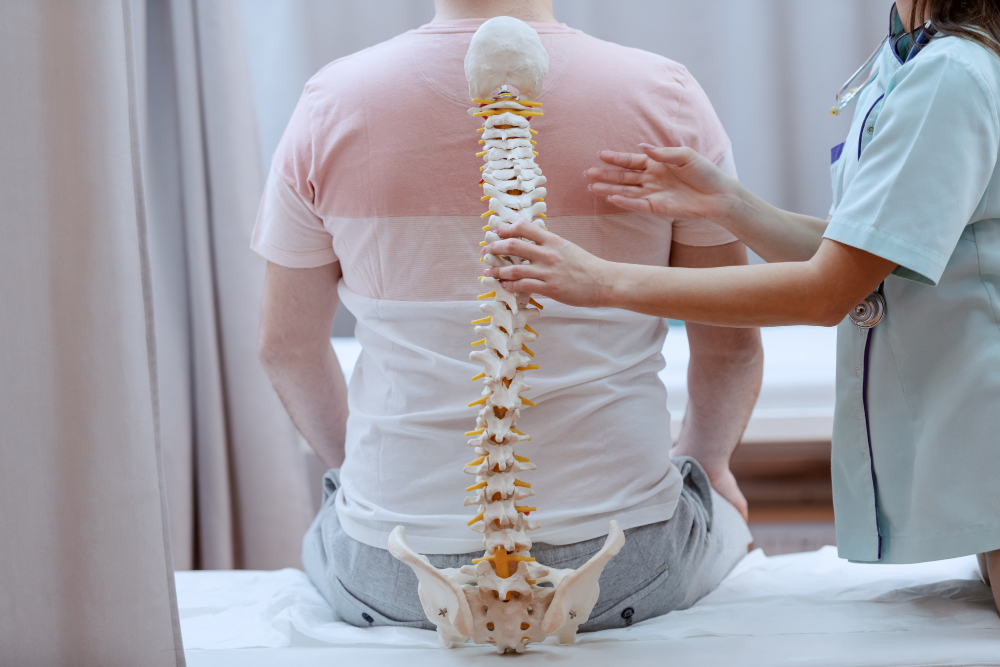Spine
Anatomy of the Spine:
The spine is composed of a series of stacked bones called vertebrae. There are five main regions of the spine, each with specific characteristics:
- Cervical Spine: Consisting of 7 vertebrae, the cervical spine supports the head and allows for neck movement.
- Thoracic Spine: Made up of 12 vertebrae, the thoracic spine connects to the rib cage and provides stability to the upper body.
- Lumbar Spine: Comprising 5 vertebrae, the lumbar spine supports the lower back and bears the majority of the body’s weight.
- Sacral Spine: Fused into a single bone (the sacrum), this region connects the spine to the pelvis.
- Coccygeal Spine: Also fused into a single bone (the coccyx or tailbone), this region supports pelvic structures.
Functions of the Spine:
The spine serves several vital functions:
- Support: The spine provides structural support to the body, maintaining an upright posture.
- Protection: It encases and protects the delicate spinal cord, which is the main pathway for nerve signals between the brain and the body.
- Mobility: The various regions of the spine allow for a wide range of movements, including bending, twisting, and flexing.
- Load Distribution: The spine distributes body weight evenly to prevent excessive stress on any one part of the body.
Vertebral Structure:
Each vertebra has a similar basic structure:
- Vertebral Body: The front portion of the vertebra that bears weight.
- Arch: Extending from the vertebral body, the arch forms the protective canal for the spinal cord.
- Spinous Process: The bony projection at the back of the vertebra.
- Transverse Processes: Bony projections extending from the sides of the vertebra.
- Articular Processes: Paired projections that form joints with adjacent vertebrae.
- Intervertebral Discs: These act as shock absorbers between vertebral bodies, allowing flexibility and cushioning.
Common Spinal Conditions:
Numerous conditions can affect the spine, including:
- Herniated Disc: The gel-like material inside a disc protrudes and presses on nearby nerves.
- Spinal Stenosis: Narrowing of the spinal canal, often compressing the spinal cord or nerves.
- Scoliosis: Abnormal sideways curvature of the spine.
- Degenerative Disc Disease: Wear and tear of the discs, leading to pain and decreased mobility.
- Spinal Fractures: Breaks in the vertebrae, often caused by trauma or osteoporosis.
- Sciatica: Compression or irritation of the sciatic nerve, causing leg pain.
Treatment and Management:
Treatment for spinal conditions depends on the specific diagnosis and severity. Options include:
- Conservative Management: Rest, physical therapy, pain medications, and lifestyle modifications.
- Injections: Corticosteroid injections to reduce inflammation and pain.
- Surgery: In cases of severe pain or nerve compression, surgical intervention may be considered.
Conclusion:
The spine is a complex and essential structure that provides support, protection, and mobility. Understanding its anatomy and function is crucial for maintaining overall health and addressing spinal conditions. If you experience persistent back pain, limited mobility, or other spine-related symptoms, seeking medical evaluation and guidance from a healthcare professional is important for proper diagnosis and treatment.




















